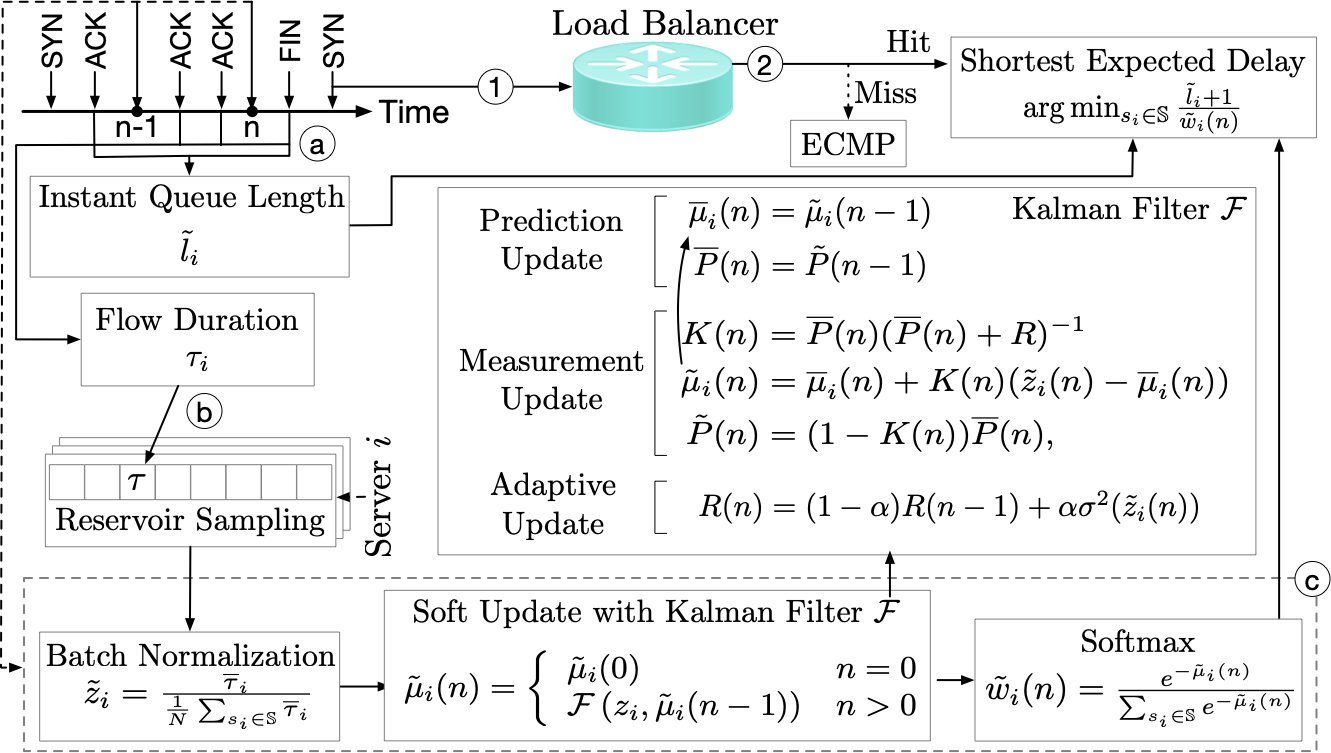Intro
I have been working for a couple of years on the subject of making load balancers in data center networks more “intelligent”–in the sense of making appropriate task allocation according to both the dynamic server load states and the static provisioned server capacities. After accumulating enough results based on both simulation and experiments on physical machines, we are convinced that statistical methods can definitely help load balancers make more informed load balancing decisions and improve resource utilization and quality of service. We also had the honor to be acknowledged by the top-tier research community and published our work in the A* ranking journal on networking–IEEE/ACM Transactions on Networking.
Efficiency and fairness in load balancing for dynamic data centers are relevant challenges, as it is demonstrated by the abundant literature on these topics. We believe that this work brings substantial contributions to be eligible for a journal publication.
The work provides an in-depth analysis of existing Layer-4 load balancers, and identifies their relevant factors, performance, and limitations. Based on this analysis, a distributed load-aware load balancing algorithm is proposed, specified, implemented and evaluated through simulations and test-bed experiments. This algorithm overcomes some of the identified fundamental limitations of previous approaches.
The contributions and findings of this work are:
- the taxonomy of existing load balancing algorithms;
- the analytical study of the dominating factors in load balancing performance;
- the specification of a “fair”, and adaptive, load-aware load balancing algorithm, HLB, that requires no additional control message or signalling, and does not need manual configuration;
- the evaluation of the proposed algorithm, HLB, and the comparison with existing load balancing algorithms, in various scenarios, and under realistic network traffic.
The Paper: HLB: Toward Load-Aware Load Balancing
The purpose of network load balancers is to optimize the quality of service to the users of a set of servers - basically, to improve response times and to reduce computing resources - by properly distributing workloads. This paper proposes a distributed, application-agnostic, Hybrid Load Balancer (HLB) that - without explicit monitoring or signaling - infers server occupancies and processing speeds, which allows for making optimized workload placement decisions. This approach is evaluated both through simulations and extensive experiments, including synthetic workloads and Wikipedia replays on a real-world testbed. Results show significant performance gains, in terms of both response time and system utilization, when compared to existing load-balancing algorithms.
Citation is preferred in the following format:
@ARTICLE{yao2022hlb,
author={Yao, Zhiyuan and Desmouceaux, Yoann and Cordero-Fuertes, Juan-Antonio and Townsley, Mark and Clausen, Thomas},
journal={IEEE/ACM Transactions on Networking},
title={HLB: Toward Load-Aware Load Balancing},
year={2022},
volume={},
number={},
pages={1-16},
doi={10.1109/TNET.2022.3177163}}
